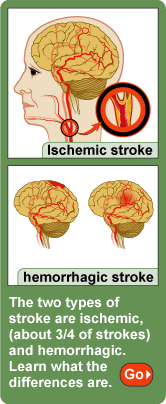The brain stem is the bridge between the brain and the spinal cord. It is responsible for a range of important functions, including the control of arousal levels. If there is a problem with the brain’s arousal system (the reticular activating system), or with its communications between other brain areas (such as the cerebral hemispheres), then the brain’s activity is impaired. Coma is a state of consciousness that is similar to deep sleep, except no amount of external stimuli (such as sounds or sensations) can prompt the brain to become awake and alert. A person in a coma can’t even respond to pain. A wide range of illnesses, conditions and events can cause coma. These causes share common characteristics: they either damage the reticular activating system or the cerebral hemispheres, or they suppress the functioning of the cerebral hemispheres.
Symptoms
The symptoms of coma include:
- The person looks like they’re asleep.
- No amount of sensory stimulation can wake them up.
- They may be breathing unusually.
- They may be holding their body in an unusual posture.
- Their pupils may be affected in a number of different ways - for example, one pupil is larger than the other or both pupils are constricted.
The various causes of coma can be broadly divided into three main categories, including:
- Intracranial - events occurring within the skull. This can include infection (such as meningitis), haemorrhage following a severe head injury, stroke, brain abscess, brain tumour, cerebral oedema (swelling of the brain) or the after-effects of an epileptic seizure.
- Extracranial - any external event that causes reduced oxygen or blood flow to the brain (cerebral hypoxia). This can include acute cardiac arrest (heart attack), alcohol poisoning, drug overdose (prescribed or illegal), carbon monoxide poisoning, liver or kidney failure, hypoglycaemia (low blood sugars), hyperglycaemia (high blood sugars), fever, electrocution and hypothermia (drop in body temperature).
- Psychiatric - mental disorders, including depression and catatonia, can cause a state of consciousness that appears very similar to coma.
A coma is a medical emergency. A quick diagnosis can be life saving; for example, a person with diabetes may have dangerously lowered their blood sugar levels by accidentally injecting too much insulin. Immediate treatment is crucial in this type of life-threatening situation. Generally, medical personnel diagnose and treat coma patients in the following order:
- The airway, breathing, blood pressure and pulse of the person are checked.
- Their temperature is taken - for example, a high temperature may indicate fever and infection, while a low temperature suggests hypothermia.
- The body is examined for injuries - for example, the person may have sustained a serious head injury.
- The doctor checks for signs of brain damage - for example, complete limpness of the whole body or unusual breathing patterns.
- The pupils of the eyes can offer information on the cause of the coma - for example, unequal pupil sizes can indicate pressure in the brain, while pinpoint pupils could suggest narcotic overdose.
- A variety of blood tests can check a range of important factors including red and white blood cell counts, sugar levels, salt levels, alcohol levels, and blood levels of oxygen and carbon dioxide.
- Urine tests can show the presence of toxins and sugars.
- Scans of the brain, including CT and MRI, may be needed to help diagnose injuries to the brain.
- Suspected infections can be checked via lumbar puncture (a small amount of cerebrospinal fluid is drawn from the spine and tested in a laboratory).
Proper diagnosis can sometimes take hours or even days. In the meantime, the person is given immediate intensive care. This would include:
- An intravenous line (IV or drip) to provide fluids and drugs.
- An oxygen mask.
- Urinary bladder catheterisation.
- Constant monitoring of their vital signs including pulse, breathing and blood pressure.
- Intravenous glucose.
- Pumping of the stomach, if it is thought the person ate or drank something poisonous.
- Administration of a narcotic antidote, if a drug overdose is suspected.
- A respirator, if the person is unable to breathe by themselves.
Treatment depends on the cause and severity, but may include:
- Intravenous administration of glucose in the case of hypoglycaemia.
- Intravenous administration of naloxone in the case of a heroin overdose.
- Surgery in the case of haemorrhage - for example, subdural haematoma (a blood clot between the brain and its covering).
- Antibiotics in the case of infections.
The person’s prognosis depends on the cause and severity of the coma but, generally, anyone who falls into a comatose state is at risk of dying. In some cases, there may be a complete recovery with no loss of brain functioning, while in other cases, lifelong brain damage is the result. If the person’s brain was severely damaged or deprived of oxygen for a long time, they may be in a vegetative state. This means they can breathe, swallow and startle to stimuli such as loud noises, but have lost the higher brain functions that allow consciousness and personality. Brain death means the person has such severe brain damage that they are no longer able to breathe by themselves and need to be kept on a respirator. An electroencephalogram (EEG) typically shows no brain activity at all - the person has died, even though their heart continues to beat.
Where to get help
- Your doctor
- Emergency department of your nearest hospital
- Always call an ambulance in an emergency Tel. 000
- Neurologist
- Coma is a state of consciousness that is similar to deep sleep, except no amount of external stimuli (such as sounds or sensations) can prompt the brain to become awake and alert.
- A coma is a medical emergency.
- The wide range of causes includes head injury, stroke, cardiac arrest, hypoglycaemia, hyperglycaemia, hypothermia, drug overdose, and kidney or liver failure.


